Effectively Covering The Water When Float Fishing
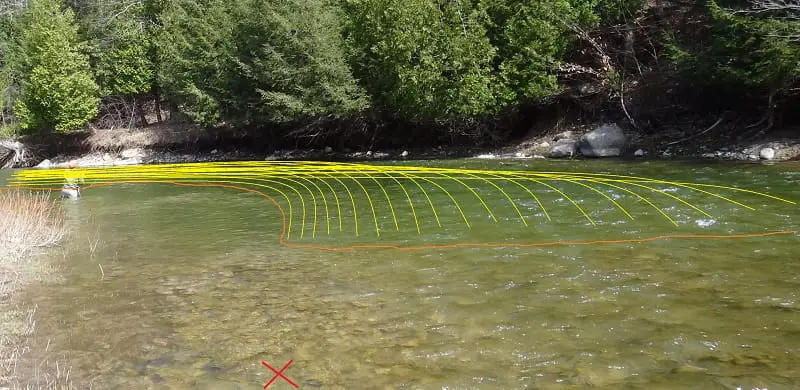
Effectively covering the water when float fishing is one of the four fundamentals of float fishing that I teach my clients. Covering the water well is critical to catching more trout and steelhead, yet many anglers do it poorly.
Covering the water when float fishing means presenting your bait to every spot that a fish might be holding. You need to be standing in the right spot, you need to be fishing in lines in a systematic way, you need to be getting your bait deep enough, and you need to cover all spots thoroughly.
I’ll even discuss the side drag issue most anglers have when drifting floats far out or long distances. There are some tricks to help alleviate this problem.
Reading The Water
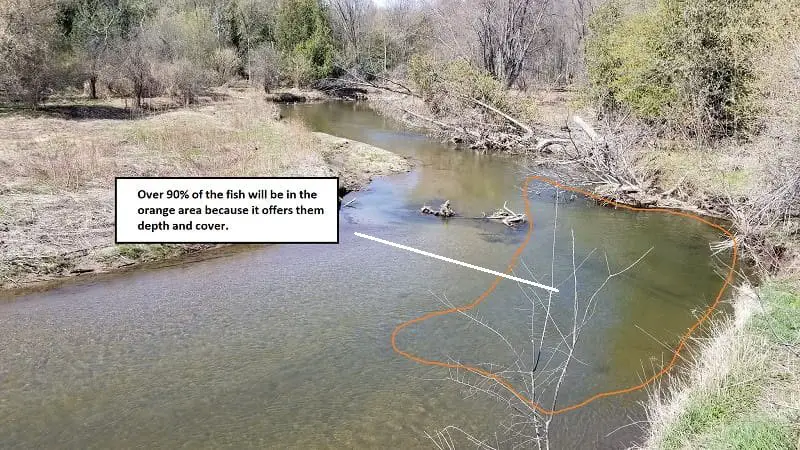
Part of covering the water effectively is knowing what water is good and what water won’t have any fish in it. This is called reading the water, and it can be easy once you know what to look for.
Most fish like depth, current, and structure, so if you can see this you are going to be able to cover those spots better. Being able to read the water means you can focus on just the good spots.
I often tell anglers that if you know how to read the water well, you can eliminate over 70% of the water that doesn’t hold much fish. Often, 80% of the fish will hold in the same 20% of the water. When you figure out how to find these spots you can eliminate all the bad water and start catching more fish.
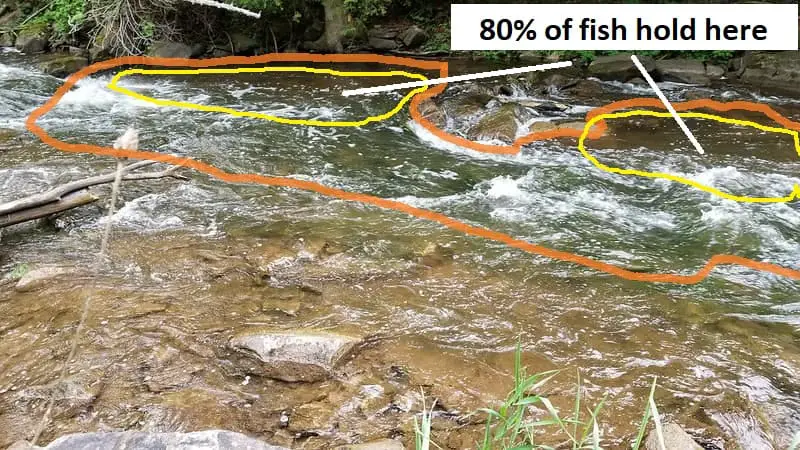
When fishing big water where you can’t really see the bottom or where you can’t see any obvious holding areas or structure, I will start fishing the spot where I lose sight of the bottom and will fish in lines about 1 foot apart from one side of the river to the other side of the river where I can start seeing bottom again.
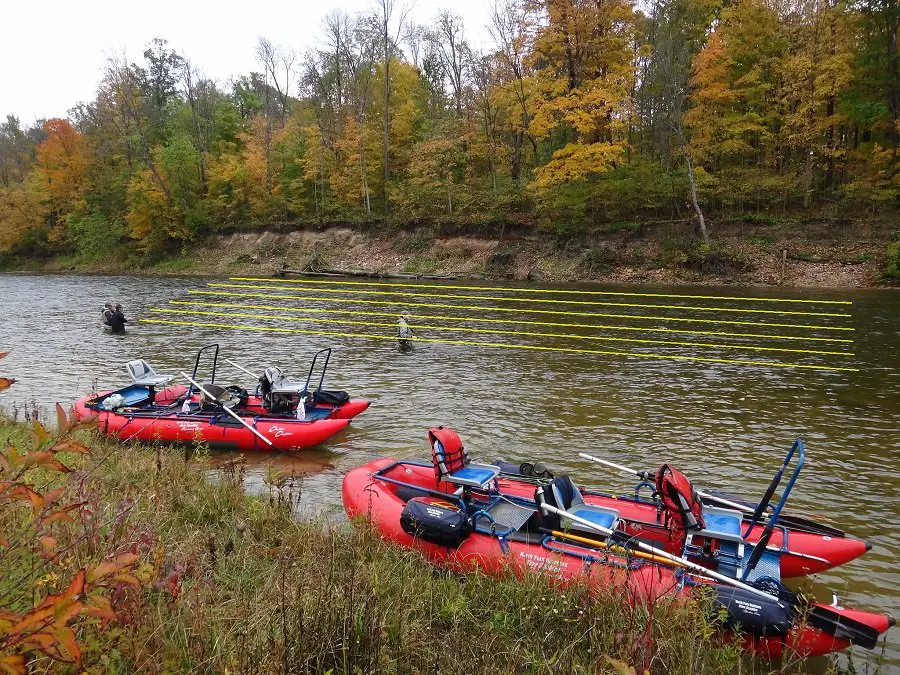
Be In The Right Spot To Cover The Water Better
When float fishing, it’s best to fish from the top of the pool down to the bottom of the pool in lines.
To fish in lines, you need to be standing near the top of the pool about a rod’s length from where the deep water starts, and then cast your float there. This means your float will be landing 6 to 8 feet further than your rod tip can reach.
In the above picture, you can see the two anglers are fishing very close to the first line, and therefore, they would be practically standing on top of the fish.
To fish that first line well, they really should be standing back about 20 feet. The only time I might move to where they are standing is if I was fishing the middle or far side of this run.
Each time you cast, you will move your float one foot further out until you have covered the entire run. This is the basics of effectively covering the water when float fishing and I will get into fishing lines below.
The Float Fishing Side Drag Problem And How To Prevent It
There is a natural tendency for your float to pull towards you so you can’t get a straight line down the river. It could be very slight, but even a slight sideways pull can prevent the fish from biting, and it could lift your bait off the bottom.
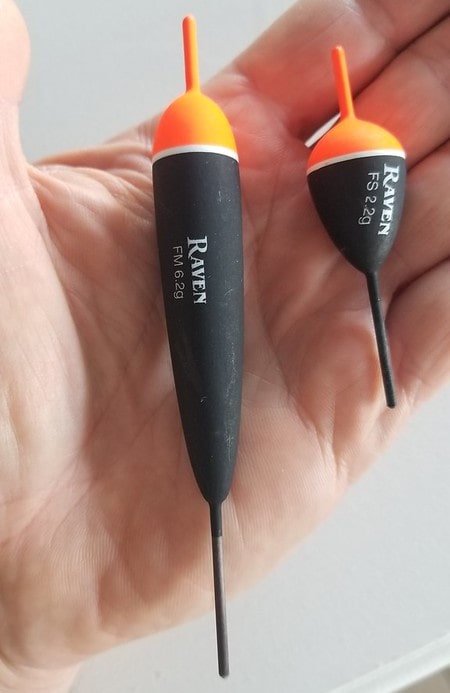
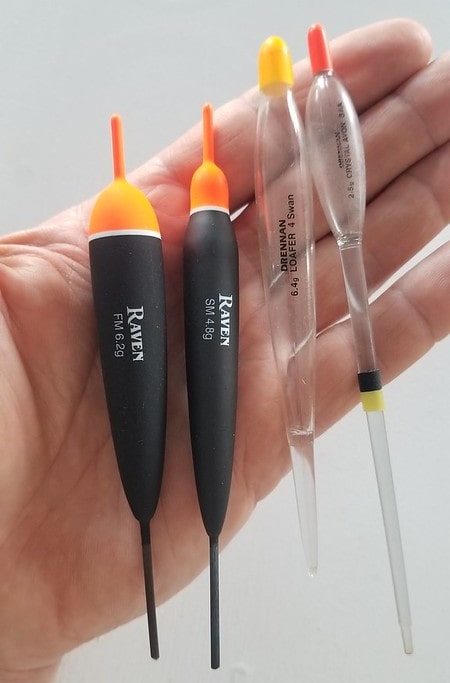
Don’t Stand To Close
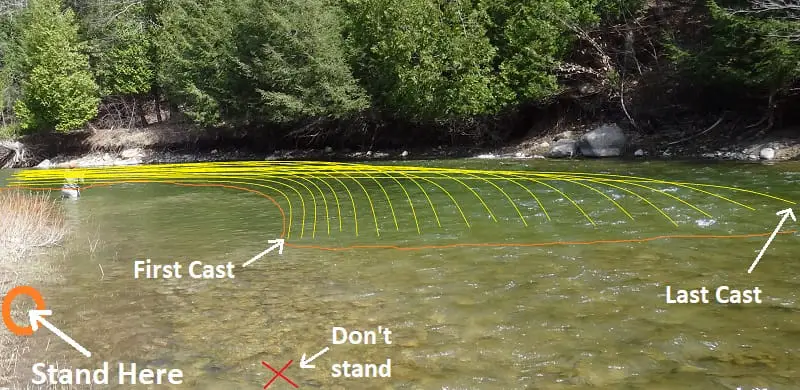
I know I just said to move in close for a better drift, just make sure you do it right and safely.
In my guiding experience, I have found that many guys move in too close to the fish when they start to fish a spot, and the fish are right under their rod tip, which is not good.
I tell my clients that, you always want to be as far back as possible but still be able to get a good controlled drift and a good hook set. Standing upriver and above the fish can kick mud, debris, and sand in the fish’s face, which can spook the fish. Not only that, but fish look forward so they are more likely to see you and be spooked.
I have also found that anglers will stand downriver and cast upriver to the top of the pool and let their float drift past them, which is not good for proper presentation.
Standing at the top of the pool allows you to control your presentation and speed better and that is very important if you want to catch the most fish possible.
In fact, controlling your speed is what I consider to be the most important fundamental of effective float fishing, and you can see more about that on my page, Float Fishing: Controlling Your Speed For More Fish.
How Do You Stop Your Float From Drifting Towards You
The further out you are and the more directly below your rod tip is the more straight your float will run in the current.
The further out and across your float is, the more likely it will start to micro-drag in towards you. This is an unnatural path for your bait to be moving, and if it’s too much, the fish will ignore your bait. So, how do you stop your float from drifting toward you?
The two best ways to stop your float from drifting towards your is to use the right float, release some of the tension on your line, and move your body or your rod tip further out into the pool so it’s more directly above the float.
First, make sure that you have the right float for float fishing. Some floats work better for tracking straight, so check out my page 5 Best Centerpin Floats For 2021.
If you find that your float keeps pulling in towards you, which is normal when you stand off to the side, try fishing in lines directly below your rod tip, which will help you float drift straight down.
Just remember that if your float is not tracking in towards you, then it’s best to stand back because standing directly above the fish could potentially spook some fish.
Fish In Lines
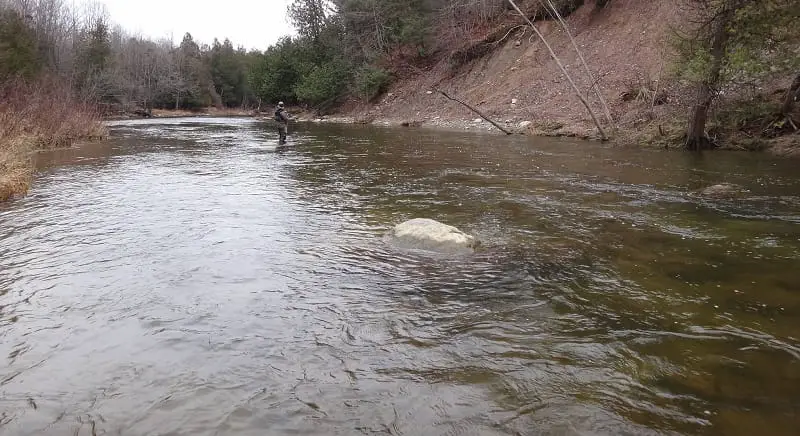
When covering the water when float fishing, your float should travel in the same direction as the bubbles. If the bubbles on the surface of the water run straight your float should run straight, if the bubbles curve around a bend then your float will also travel around the bend.
I call this fishing in lines or fishing in lanes from the top to the bottom of the spot that you are fishing.
Depending on the type of water and the fish that I am targeting, I will run two or three casts down the same line and then move it over about 1 foot and repeat this until I have covered the entire spot.
I teach clients to use rocks on the bottom, deep edges, current lines, or even the distance from the rod tip or from the bank as markers to help them remember where the last cast landed and where the next cast needs to go.
If done properly, my bait will have been within one foot of every fish in that pool, providing I have my float set to the right depth, which I will discuss below.
The smaller my bait, the harder it is for fish to see it, so I will often cast the same line more times with a small bait just to make sure all the fish in that line see the bait. If it’s a very large bait that stands out like a 4-inch pink plastic worm, I will cast it fewer times because the fish should see it easily the first or second time, especially if the water is clear.
I might cast the same lines more times in off-colored water.
Guide Tip – Just because a fish sees your bait doesn’t mean it will eat it. In fact, I know for certain that many anglers put their bait past fish, and the fish ignore it simply because the anglers have not perfected the four fundamentals of float fishing which I discuss in my article Centerpin Fishing For Beginners: 20 Steps From A Top Guide.
Fish From The Inside Out
When I watch most anglers float fish a spot, their casts and their drifts are very random. Some casts are here, and some are there. They make ten casts down the same line and then one over there and then one over here. It doesn’t surprise me that anglers struggle to catch fish even when they are using such an effective method as float fishing.
I tend to fish and cover the water very systematically and this is what I teach my clients. I always start fishing the pool from close to me to farthest from me and I never miss any part of the pool.
The reason for this is that casting a float out in the middle or to the far side first could spook fish that were in closer to you when you drag your float back over their heads when you reel it in. For me, starting my casts in close and working 1 foot further out each time is also a great method to make sure that I cover the entire pool.
Getting The Right Depth
Part of covering the water when float fishing is not just covering the water from 1 bank across to the other bank or from the top of the pool to the bottom of the pool. It’s also about covering the right depth and being in the right part of the water column.
Getting the right depth when float fishing is important because most fish will be within 24 inches of the bottom, and often, they won’t move very far to hit a bait.
Many of my clients will ask me how do I know how deep to set my float. The answer is to guess how deep the water is, then set your float slighter shallower than you think, and then cast and see if it either catches fish or catches bottom. Once you find the bottom, make it 6 inches to 12 inches shorter so you are not dragging the bottom.
Finding the bottom and even mapping out the pool so you know where the deep spots, trenches, and rocks all are is important. Finding the depth and setting the hook is one of the four fundamentals of effective float fishing that I teach my clients. You need to do this well if you really want to start catching more fish when float fishing.
I discuss everything you need to know to find the bottom easily and to be sure you are in the strike zone on my page How To Know How Deep To Set Your Float – 2 Easy Ways.
Find The Edges When Covering Water – The First Drop
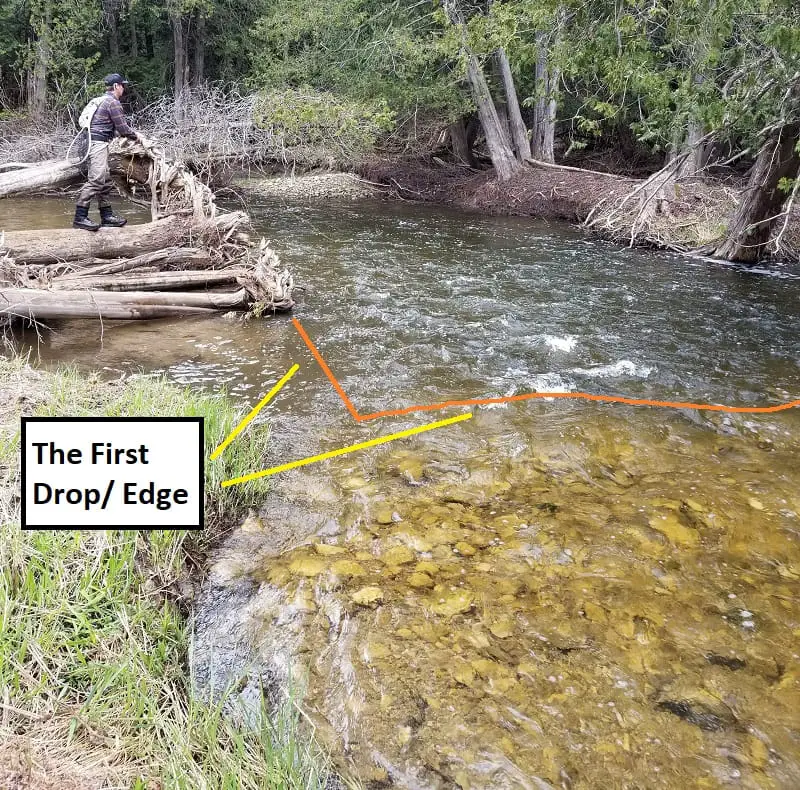
I tell my clients that the fish will often sit on the edge of the first drop. The first drop can occur in multiple spots.
The first drop could be where the 2-foot deep riffle water above the pool drops into the 4-foot start of the pool, and there could be fish right there.
The first drop or edge could also be two feet or ten feet out from the bank on both sides of the river. You might see the bottom for six feet out and then it just gets deeper, this is the first edge and this is where I will start fishing.
I look for the first drop at the top of the pool and the first drop on my side of the river and make my first cast there. In spots that have deep but slow water near the bank, I will start my first drift where the current starts.
Sometimes, the first edge is 20 feet out, and sometimes it’s two feet from the bank. It’s right where you almost lose sight of the bottom.
Then I make a few good drifts, always looking for the bottom as talked about above, and then once I find the bottom, I make a couple of good drifts, and then I fish the next line, which is one foot further, and then I repeat, one foot at a time until I’m all the way across the river or at the next edge where it starts to shallow up again.
Guide Tip – When casting and fishing lines, most beginners won’t have the accuracy to land the float perfectly on the line that they want to fish which is why I recommend two things.
First, if you cast short or miss your target spot, just fish it out.
Second, to help you with accuracy try casting beyond the spot you wanted to land your float and then pull the float into the lane position that you want to fish.
Short Drifts Versus Long Drifts
One of the advantages of float fishing is that you can get really long drifts, up to or over 100 feet while still presenting your bait well.
Unfortunately, very long drifts are not always the best thing when float fishing, and often times I will split the spot that I am fishing into multiple mini spots and this method has greatly increased the amount of fishing I catch.
Some of the disadvantages of very long drifts are:
The pool or run that you are fishing is not likely to be the same depth from the top of the pool to the bottom or tail out of the pool. If you set your float for five feet deep, which might be great for the first 20 feet, the middle 20 feet might be nine feet deep and that means your bait could be too high over their heads.
Knowing how to find these deep spots and how to find the bottom is important, and I discuss this on my page, Know How Deep To Set Your Float.
Long drifts require more line management and effort. You are more likely to need to have your line on the water once the float gets 40 or 50 feet downriver from you. Line on the water can be pulled sideways or even downriver faster.
I have seen guys set the hook when their float goes down 80 feet away, and they have so much line and slack on the water that they don’t even move the float or the bait and lose the fish.
The side drift problem happens a lot more when you make longer drifts. If this happens I will often split the river into sections and fish each section separately.
Long drifts require better and harder hook sets. Due to slack and stretch in the line, many guys do not get good hook sets when their float is way down the river and they miss fish because of this.
This is why I will often have my clients fish a pool in two or three parts. I will have them pull their float out sometime halfway or a third of the way down the river, and once they effectively cover that top half of the pool, we will shift down and fish the lower half of the pool next. This method of fishing the spot in sections helps prevent side drift, slack, and hook set issues.
Tight Lines
Graham
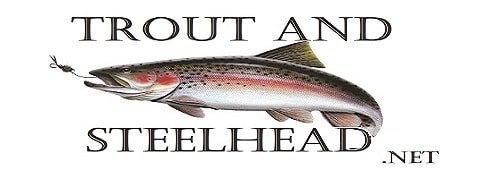
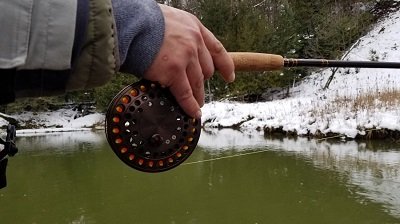
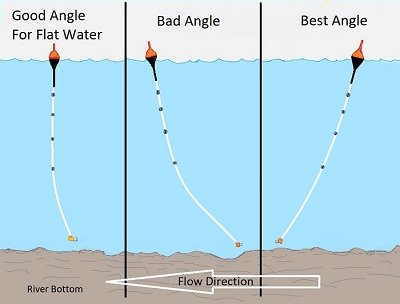

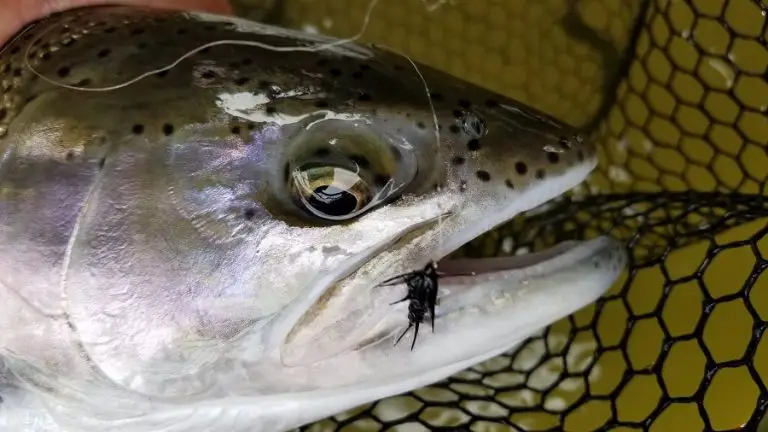
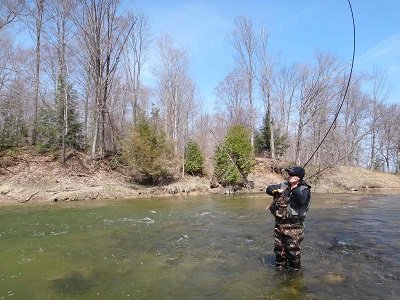
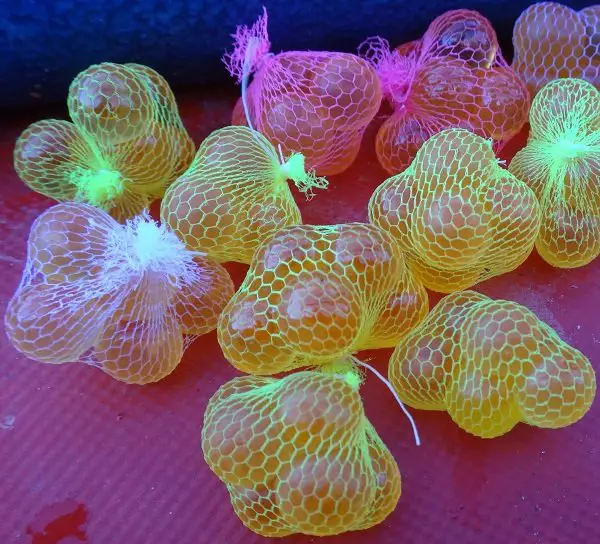
Snags. Been reading about covering the river. In Central Northern Mich (manistee r and br cr) , can’t figure how I’d get a float line covering the water line by line without getting snagged.
Hi Claudette,
Unfortunately, snags are a part of the game. It’s best to remember where the snags are and avoid them.
When covering the water, pull the float out just before a known snag. You can also cast behind the snag and finish your drift. I have watched many of my clients hook the same snag over and over again simply because they don’t pay attention to where it is or they can’t remember the exact spot. It’s a skill in itself to scan the bottom and look for snags, as well as remember exactly where they are, and also to learn to fish around them, and even steer your float so you just miss the snag.
Also, some rivers and some spots in the river will have more snags so you may want to avoid fishing these spots until you are more comfortable fishing that type of water.
Good Luck,
Graham
My home river about 100 ft wide. When I try to cast far, I can’t control the speed. Should I bother covering that far away line if my drift is out of control?
Hi Alex,
I have two options for you.
The further your float is across the river the harder it will be to control your speed without pulling the float towards you. My advice is to fish the closer water with good control. And as your float gets further out and across the river just do as much as you can to control the speed and angles and hope for the best. If you can move further out into the river safely, that will help you with control.
Another option and one that I use more often with new clients that struggle with the float fishing technique is to ignore the far water completely and only fish the close and easy water. I have found that they rarely catch fish in the far water without good control so what’s the point in fishing it. I’d rather move and fish multiple spots that can be fished close and fished well even if that means only fishing each spot part way across. Spending 95% of your time in the water that you can present your bait well in is better than 50% fishing well and 50% out of control.
Maybe try both and see what works best for you.
Hope that helps.
Graham
Hi Graham, I read your article ten times, incredible valuable information here, thanks lot!.
I do have a question regarding the relationship : the length of leader, current and weight/size of bait, how of three factors impact the depth of bait, how nature of presentation of bait ?
Hi Leo,
More length for deeper water,
More weight for faster currents, or less weight for less current.
More weight, or the weight lower on the leader for lighter baits, and fewer weights or weights further up the leader for heavier baits like glass beads.
Then adjust these based on current and depth.
Hope that’s what you meant.
Graham,